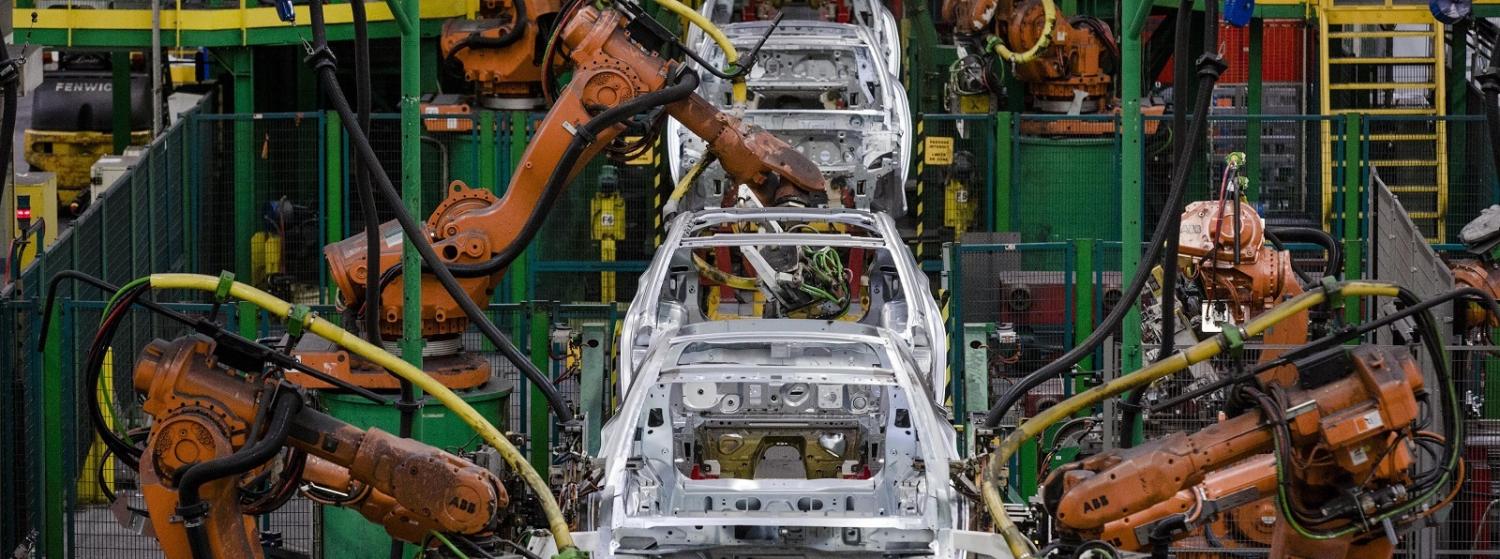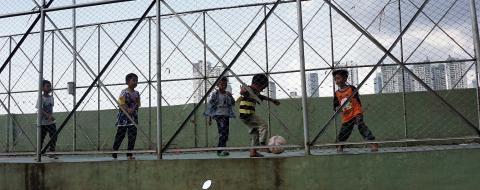Unchained
The release of a new study on Australia’s offshore investment has triggered an interesting divide between former trade minister Craig Emerson and his old advisers on the outlook for global supply chains.
Emerson has been forecasting a winding back of the fragmented global production process which has been seen as a key driver of trade growth until recently, during functions to promote Outbound Investment, a new study from the Committee for the Economic Development of Australia (CEDA)*.
The way Emerson sees it, the rise of robotic production will reduce the attraction of using global supply (or value) chains to reduce labour costs, and lead instead to either more integrated production being located closer to end markets or in old home markets.
This is an idea that received some high-level attention inside the International Monetary Fund last year when it did extensive modelling to identify the reasons for the sharp decline in trade growth that has been apparent since the global financial crisis in 2008.
The fund concluded in its October World Economic Outlook that: 'The apparent decline in the growth of production fragmentation across countries is also putting the brakes on trade growth, although it is still difficult to judge whether this is a natural maturation of existing global value chains or the result of policy-induced distortions.' IMF modelling has pondered whether more end-to-end production in China (compared with so-called Factory Asia-style cross border production) could account for a slow-down in trade growth due to less need for cross-border supply of components.
But Emerson has drawn a firm rejection from Austrade with executive director Jane Madden telling the audience at CEDA publication’s Sydney launch that global value chains will be important for a long while yet. Despite the emerging debate about this issue at the academic level, Madden said Austrade was still doing a lot of work on how Australian companies could get into global value chains, especially in the services area after the services openings in the recent bilateral north Asian trade agreements.
The CEDA study calls for a greater share of Australia’s foreign direct investment (FDI) to go into Asia to better integrate the country with the rising share of world production in Asia. It highlights how Australia’s overall outward FDI is about the same GDP share as the Group of 20 nations average. But the Asian share of Australia's FDI - 10% - lags far behind the Asia's two thirds share of Australian exports.
As we have observed here before, finding the right benchmark for judging direct investment in Asia is quite difficult, but the CEDA study says this is now a critical issue for long term economic growth. CEDA’s chairman and blue-chip company director Paul McClintock had some tough words for the country’s corporate elite declaring: 'Culturally we have gone to sleep. We must work at every level (on Asian investment) from investment managers right through.'
The CEDA report examines the range of options for potential Asian investment. In particular, it highlights the need for a creative approach to investment in agriculture and food value chains to export Australian farm products into Asia. It argues that investment in transport infrastructure at home, domestic food production clusters and use of Australian expertise in cold storage facilities in the region will all need attention.
And indeed, Emerson concedes that this is one part of the economy and export process where value chains and on the ground investment will remain crucial for Australia.
Red capital
The political controversies over selling power stations and iconic farmland to Chinese investors didn’t stop the remorseless flow of Chinese money into Australia last year.
The latest figures from the annual bottom up survey by KPMG and Sydney University shows a record number of commercial transactions were signed and the total flow of investment was the second highest annual figure in the past 10 years at $15.36 billion.
This will have interesting implications for the security versus business divide over China. It can be seen as confirming the security lobby argument that China needs Australia economically and will just cop the tougher regulatory environment underlined by the appointment of former spy chief David Irvine as head of the Foreign Investment Review Board. On the other hand, it also indicates that a widening array of Australians are getting into diverse business relationships with Chinese counterparts consistent with the Lowy Institute polling on China’s importance as Australia’s best friend in Asia.
The most striking thing about the KPMG numbers is the way they underline a relatively seamless recovery from the flood of Chinese money into the previous mining boom that often involved overpriced full takeovers that sparked community and regulatory concerns.
The second most striking thing is the fact that Chinese private investors accounted for 76% of the projects and almost half the value in a shift away from the state-owned enterprises which face reform dilemmas at home and higher regulatory hurdles in Australia.
Despite the controversy over the leasing of the Port of Darwin to the Landbridge Group and the rejection of the partial sale of the NSW Ausgrid electricity network, Chinese investors still piled into infrastructure making it the second most favoured target after commercial real estate. The finalisation of a system for identifying (and ring-fencing) so-called critical infrastructure should now underpin more of this investment.
The KPMG-Sydney University survey provides a valuable insight into this important new wave of foreign investment into Australia by tabulating the inflow from the ground up in contrast to other data sources. It’s based on actual deals signed during the year but excludes non-commercial property.
This provides a more contemporary record than the longer established official figures: the FIRB approvals (which may not ever occur and don’t count investment freed up by free trade agreement thresholds) and the Australian Bureau of Statistics data (which can be impacted by rising levels of confidentiality and uncertainty about the true origin of investment).
So the KPMG figures suggest there has been US$89 billion in actual Chinese investment in the past ten years. This contrasts with FIRB approvals data (which include housing) for nine of those years showing potential investment of $174 billion.
Meanwhile the ABS series shows there was a total stock of Chinese investment in Australia at the end of 2015 of $75 billion (including shares and financial transactions) and direct (controlled investment) of only $35 billion.
There’s a number there for every side of the China engagement debate.
Belt up
The Labor Opposition has, not surprisingly, signed up to China’s One Belt One Road infrastructure initiative amid apparent federal government vacillation with shadow foreign minister Penny Wong declaring the government risked repeating the saga that unfolded over joining the Asian Infrastructure Investment Bank (AIIB).
So it is fascinating to see what amounts to the acceptable public reservations about President Xi Jinping’s flagship project from within the top ranks of the Chinese policy making elite.
The daughter of AIIB chief Jin Liqun, who recently visited Australia, is a lecturer at the London School of Economics and this week she wrote a largely supportive but at times frank piece about the Belt and Road Initiative in Caixin business magazine.
Here’s where Keyu Jin says China has gone wrong: 'It could have run a better campaign to help advance the economic case. Economic strategy and skilful diplomacy would have to a great extent alleviated concerns about the initiative. Sometimes, China’s lack of understanding and appreciation of local customs and culture created barriers and tension with the local people. Some Chinese companies’ behaviour has been a cause of concern.'
*Greg Earl was a contributor to CEDA's Outbound Investment study

